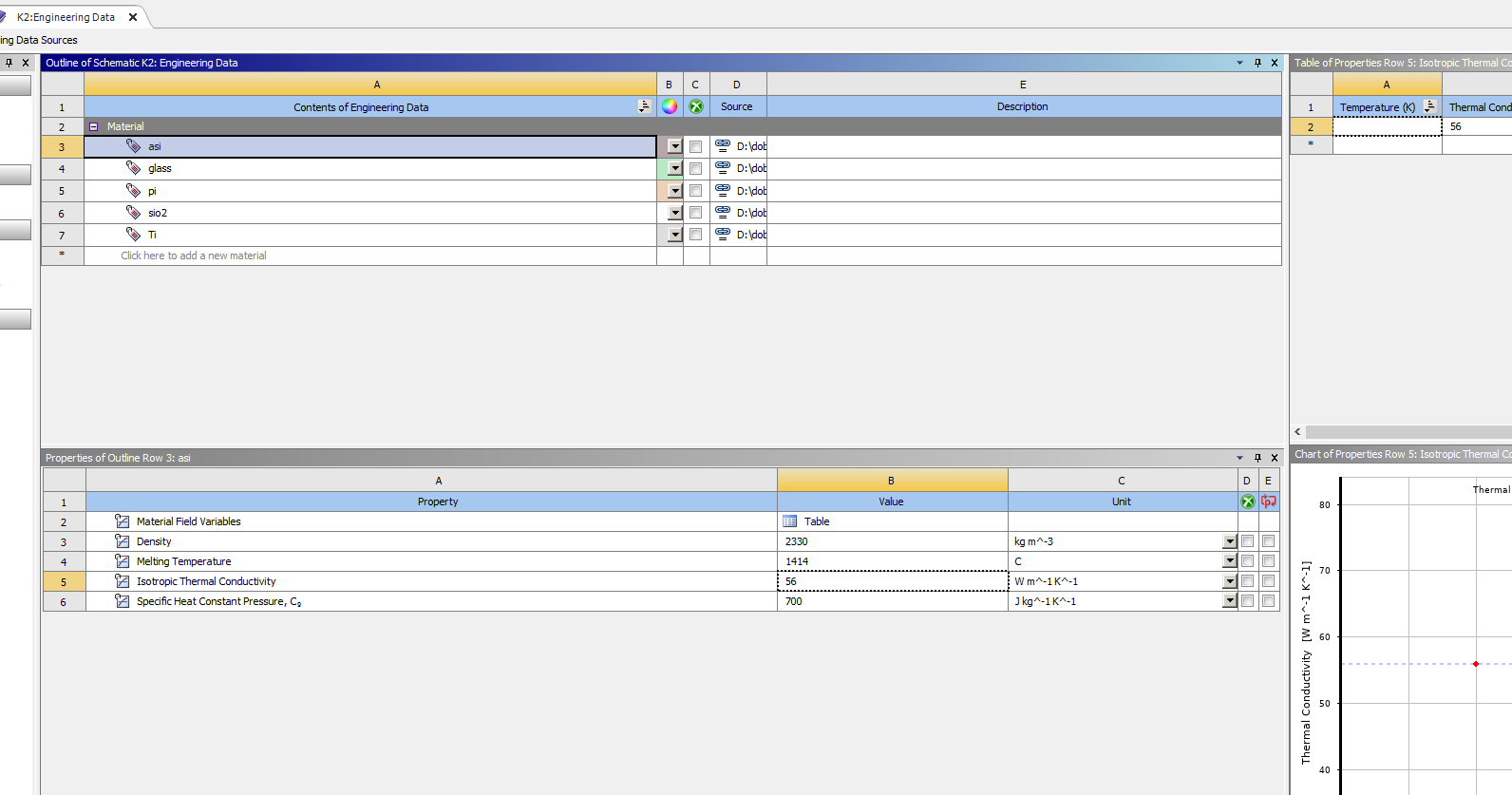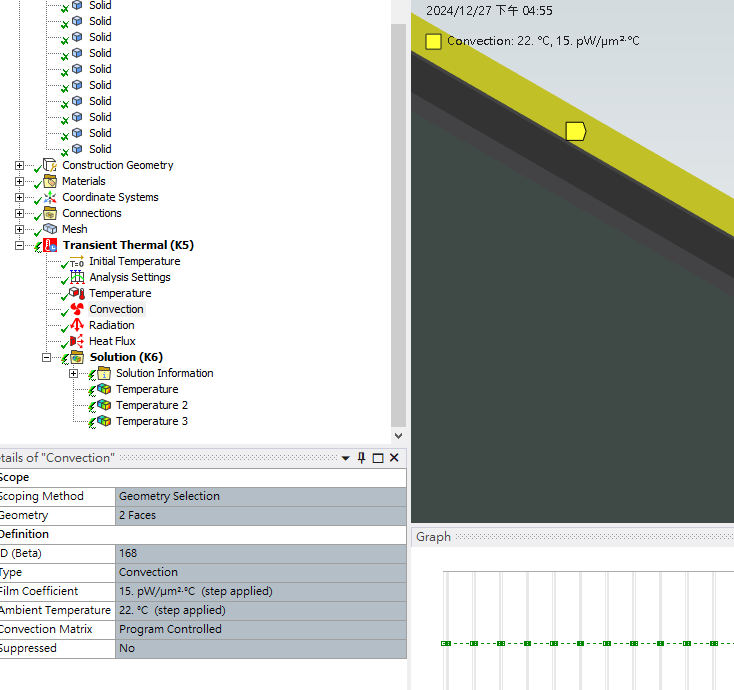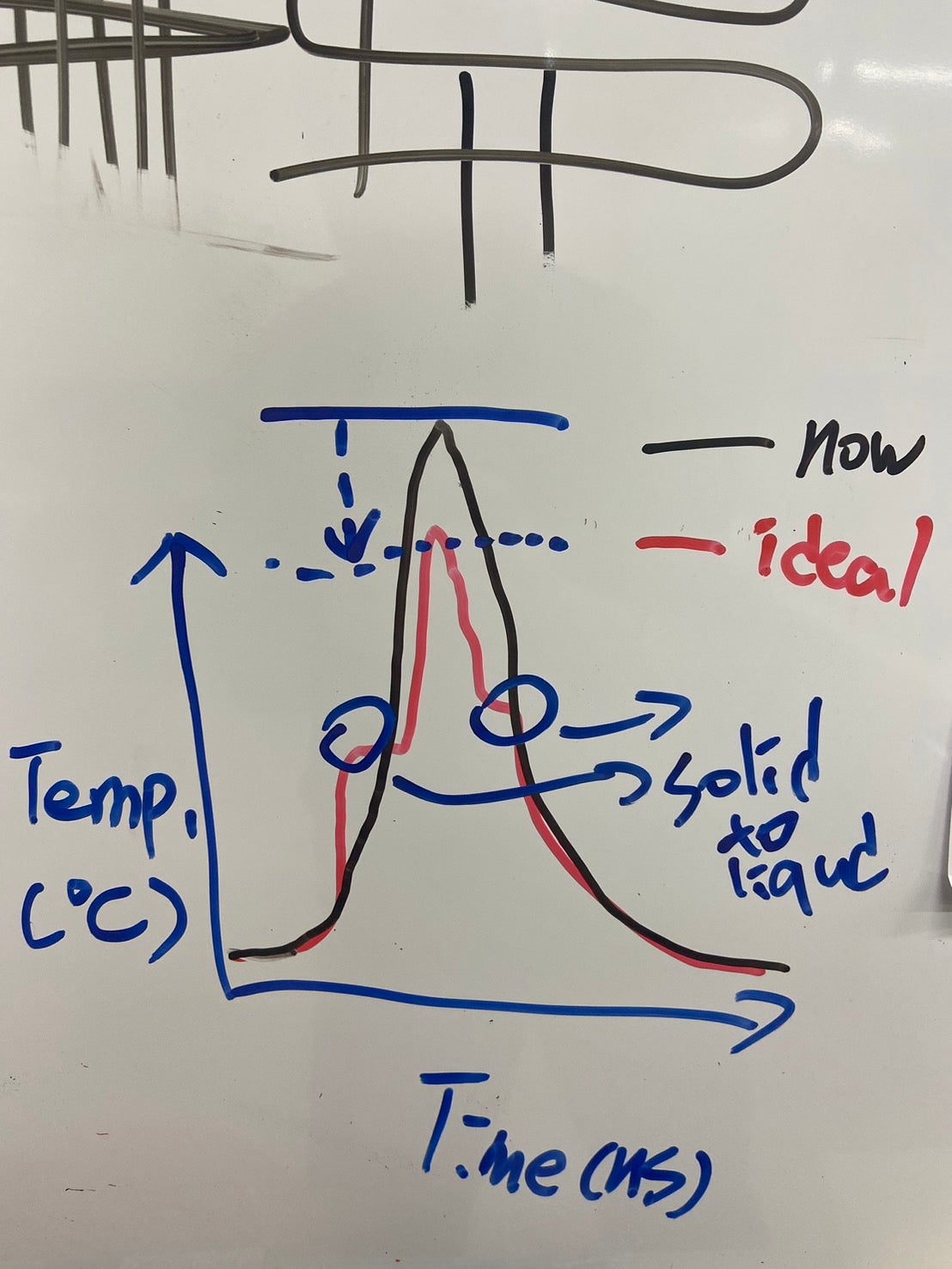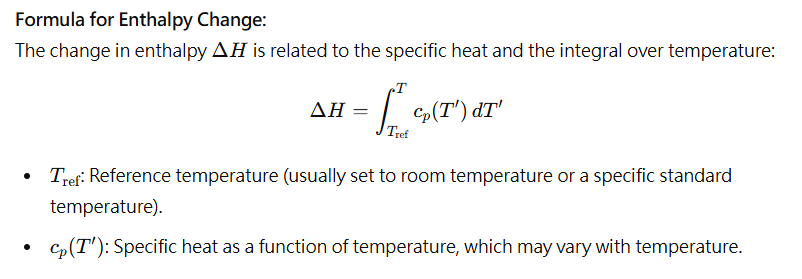-
-
December 27, 2024 at 9:13 am
n2390n
SubscriberGreeting all:
I would like to know if my settings and assumptions for transient heat transfer are appropriate:
1: For the upper heat convection region, does it need to have directionality?
In other modules in Workbench, I’ve seen that the directionality of convection needs to be clearly defined (e.g., FLUENT, ICEPAK, etc.).
Currently, I have only set the magnitude of H15, and it is a constant.
(My assumption is that air convection only occurs above the model.)2:During the annealing process, the metal undergoes a phase change from solid to liquid due to heating (with a brief two-phase transition in between), and after the laser stops, it cools down slowly (following Newton’s cooling law). The metal transitions back from liquid to solid as it cools.
Do I need to define any additional settings for this phase transition between solid and liquid?
Currently, I have only set the melting point of the metal (a-Si melting point = 1414°C).
I noticed that FLUENT has a "melting" feature, and I am unsure if I have chosen the wrong module (using FLUENT instead of Transient Thermal).
If considering the phase change, I made a simple assumption shown in the diagram below:
The peak temperature will slightly decrease (the highest point of the red line) This case mainly focuses on the temperature of the a-Si metal layer on the surface, as it is directly exposed to laser light for annealing.here's the question, In FLUENT, can the heat flux only be a constant?
Thank you!
If you have any suggestions, please let me know. -
January 3, 2025 at 2:49 pm
Chandra Sekaran
Ansys Employee1: For the upper heat convection region, does it need to have directionality?
For Mechanical there is no need to specify direction. The heat flow direction is normal to the surface.
2. 2:During the annealing process, the metal undergoes a phase change from solid to liquid due to heating (with a brief two-phase transition in between), and after the laser stops, it cools down slowly (following Newton’s cooling law). The metal transitions back from liquid to solid as it cools.
Phase change can be modeled by specifying enthalpy vs temperature as a material property. This can account for the latent heat. Please refer to section 3.8 of the thermal analysis guide at https://ansyshelp.ansys.com/account/secured?returnurl=/Views/Secured/corp/v242/en/ans_the/Hlp_G_THE3_9.html
-
January 6, 2025 at 9:16 am
n2390n
SubscriberThanks for the reply, Chandra.
Gibbs Free Energy : Δ G = Δ H − T Δ S
1:Can transient thermal analysis be calculated using only enthalpy and temperature data, without considering entropy?
(hard to findout what kind of formula is used in Workbench.)
2:If I import tabular data (specific heat and temperature), ANSYS will automatically translate it to enthalpy (using the formula for enthalpy change)
THX
-
January 6, 2025 at 3:42 pm
Chandra Sekaran
Ansys EmployeeHi, you can refer to the Theroy manual at https://ansyshelp.ansys.com/account/secured?returnurl=/Views/Secured/corp/v242/en/ans_thry/thy_heat1.html for the equations used in heat transfer analysis in Mechanical and MAPDL products. Also the thermal analysis guide might be useful to review ( https://ansyshelp.ansys.com/account/secured?returnurl=/Views/Secured/corp/v242/en/ans_the/Hlp_G_THE3.html )
You can input either specific heat/density or enthalpy. If both are spcified enthalpy vs temperature is used. Enthalpy increases continuously with temperature. Specific heat requires a step change over the phase change temperatures. So be sure to use small time steps so this step change is not missed.
-
- You must be logged in to reply to this topic.



-
4618
-
1530
-
1386
-
1210
-
1021

© 2025 Copyright ANSYS, Inc. All rights reserved.










